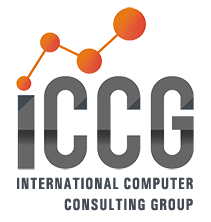As industry attitudes and consumer behaviors change, so does the challenge of sustaining a business in the fashion industry. The global health crisis has accelerated the need for retailers and fashion brand owners to reconsider the concepts of brick-and-mortar shops to meet the demands of digitally native consumers—while still maintaining omni-channel supply and ensuring sustainable production to allow for recycling. The landscape is evolving more quickly than many can adapt.
Despite these difficult new industry dynamics, fashion companies big and small still can turn these challenges into channels of transformation. Those who can observe and react to shifting buyer behaviors, regulatory changes, and the growing number of channels to market will not only gain a competitive edge, but also help assure the future success of their business.
Here are the top five challenges the fashion industry is facing today, and how fashion brand owners can respond.
1. An increasing number of channels to market
In addition to legacy distribution channels like wholesale, along with direct-to-consumer pipelines and other emerging models, an abundance of e-commerce and digital channels have created multiple touchpoints. At any one of these, consumers can discover new styles and products, research what might work best for them and their budget, evaluate prices and inventory availability, and pull the trigger on a purchase—which might then be fulfilled direct from the manufacturer, retailer, distributor, or other party. The fashion industry is already heavily invested in the world of e-commerce and leveraging the sophisticated global mail network, which means that additional channels only serve to complicate an already complex inventory management ecosystem.
2. Shifting consumer demands
The modern consumer doesn’t just want new products or styles; they want visibility into the sale-to-delivery process and they want to know whether their preferred retailers are operating with sustainability in mind. Disruptive brands have entered the market to answer the modern customer’s highly specific needs, offering made-to-order clothing and the opportunity to rent clothing.
The growing accessibility of automation and analytics have made these transformative models possible, allowing fashion brands to respond to on-demand requests on the mass market while understanding the rising sustainability concerns expressed by eco-conscious consumers.
3. Regulatory and ethical concerns
As the fashion industry has evolved, often for good reasons, so too have the regulations that govern fashion companies. To continue moving forward, fashion needs to confront its weaknesses and formulate a remediation plan. Among the top concerns for fashion companies and their consumers are ethical business practices that consider human rights a necessary link in the supply chain. These regulations work to eliminate child and forced labor, discrimination, unfair wages, non-compliance, and unsafe work environments.
According to the 2019 Ethical Fashion Report, 61% of fashion brands have created policies that address gender inequality, while another 35% have implemented tests to ensure their manufacturing workers are not exposed to hazardous materials on the job. Other initiatives are also being put in place to provide living wages and ensure responsible purchasing practices.
The same level of care and attention is also being extended to the environment as fashion companies and their customers advocate for increased transparency and sustainable environmental management.
4. Inventory management concerns
Even with the help of technology, inventory and supply chain management remains difficult for most fashion companies. On the back end, visibility into supply chain inventory is integral when it comes to maintaining responsiveness to changes in arrival dates, stock volume, and distribution channel assignment. Tools that handle supply chain visibility can help fashion brand owners gain better insights into factories, distribution lead times, available inventory levels, and the different channels to market. Nevertheless, there are additional aspects of inventory management to consider such as trends, styles, and transient customer desires.
Inventory management processes remain largely rigid and outdated, but with proper execution, fashion companies can get a better balance between stock-outs and wasted “deadstock” and increase customer satisfaction. Good execution can even help investors value your organization as a lower risk investment.
To secure success in the fashion industry, brand owners need to prioritize inventory management. This means learning how to best utilize their inventory through channels like click-and-collect at stores, ship-to-home from store, direct-to-consumers, and more. Global inventory visibility will help brand owners determine the most efficient fulfillment process for every order based on location, regional stock availability, and even transportation cost. End of season markdowns and waste as a result of overstocking can damage a brand’s sustainability score while diminishing sales revenue and diluting profit margins. Plus, extra inventory leave many fashion companies more susceptible to loss, damage, or theft.
5. Loss of foot traffic in brick and mortar locations
The global health pandemic has accelerated the decline of foot traffic in physical retail stores, but even before the pandemic, physical retail stores no longer had the same potential or sales volume that they used to. Buyers have become accustomed to digital shopping experiences, giving e-commerce and online marketplaces preferential treatment. Physical stores, for the most part, have become last resort options for many shoppers.
Beyond this, physical locations have spatial limitations. Retailers are afforded a finite amount of shelf space, making it difficult to maintain stock that consumers want. This puts retailers at risk for dampening the customer experience and can cause shortages in the supply chain.
Much like an omni-channel to market model, modern fashion brands are using hybrid solutions to address these concerns. Endless aisles satisfy consumers’ desire for an expansive product selection by offering in-store kiosks that allow consumers to purchase items from a complete range. These items may be new for the season, out-of-stock, or not available in-store, but can be shipped directly to a customer’s home from the kiosk.
Design your future
The challenges facing the fashion industry are universal, and the environment is in a constant state of evolution due to its reliance on consumers and the global climate. Maybe you have already witnessed these challenges in your own fashion organization, or maybe you see them on the horizon; nevertheless, the best thing you can do is to be aware. Adopt a proactive approach to innovation and implement solutions now to better secure your future. Reactivity is a common behavior for fashion brands, but it rarely breeds the innovation they endeavor to achieve. The future of fashion can be created by your design. Be prepared and get ready for what’s coming next.
And, as always, contact ICCG to help provide you with insight and information. Schedule a complimentary consultation to review your questions.


